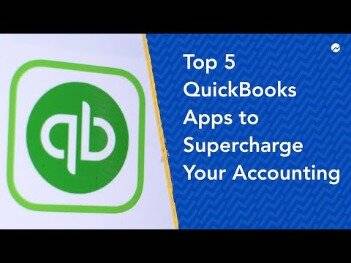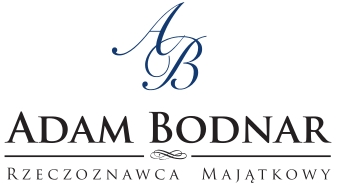Content

Since P2P is such a cornerstone of successful business, the benefits of implementing a well-oiled P2P process can be substantial. Those benefits range from reducing manual data entry, avoiding late fees and minimizing data errors and compliance issues to reducing overall cost. Any company that hires outside vendors or suppliers needs to have a procure-to-pay process in place in order to track and complete external payments. With a digitalized and automated procure-to-pay process, you can easily manage buying, approvals, compliance, payments, and suppliers on a global basis. The first step of a procure-to-pay process is to determine and define the business requirements with the help of cross-functional stakeholders.
Doing Business with Prosper – prospertx.gov
Doing Business with Prosper.
Posted: Wed, 01 Mar 2023 17:15:43 GMT [source]
Regulation non-compliance can result in considerable, unexpected spending in a paper-based workplace without automation that covers both procedures. Peer-to-peer and procurement automating solutions can help the procurement team save time while also improving budget monitoring and supply chain logistics. The departments needing raw materials or services will reach out to the procurement department with their purchase request.
Contract management software
This Procure-to-pay Process describes the steps that a company must take to procure the items and pay the appropriate remittance to the supplier, less any discounts and adjustments. Book this 30-min live demo to make this the last time that you’ll ever have to manually key in data from invoices or receipts into ERP software. Last but not least, it’s important to consider the ERP integration process when selecting a Procure-to-Pay solution.
What is step 1 of procurement cycle?
The procurement cycle starts when any of the business units in an organization needs obtaining goods/services from an external supplier. Hence, the first step of the procurement process entails identifying and consolidating the requirements of all business units in an organization.
A purchase order is a contract between a buyer and seller, committing the buyer to paying for goods or services that will be delivered in the future, without the need for immediate payment. Solutions like automated orders and e-invoicing can streamline the process—helping teams save time by eliminating manual data entry and duplicate work. Below, we’ll look at a few areas where technology is transforming procure to pay. In many companies, there’s a significant lack of communication between departments or across locations. This means that purchasing might take place independent of other functions, despite clear benefits that come with alignment.
What is the P2P payment process?
Within an ERP platform, such as those created by SAP, a business can use a software solution designed to automate this early phase of the buying process. Departments can raise their requests, and the system can list suitable vendors and create a standardized PO with a limited number of human touches. Although simple in theory, the modern P2P cycle for enterprise-level businesses is a highly complex undertaking with many moving parts.
- A P2P approach often allows an organization to centralize its procurement efforts while reducing avoidable errors and gaining useful insights into spend and cash flow.
- Requisitioning is the process of formally requesting a service, item, or product with a purchase request form.
- While the P2P function deals with a business’s procurement cycle, the O2C process deals with the entire customer ordering and fulfillment process.
- These solutions improve efficiency by reducing the need for employees to focus on manual entry and management.
- This process can be a significant contributor to improving a business’s financial health and operational efficiency.
Based on the data obtained from the previous step, the supplier performance is evaluated. A number of factors like quality, on-time delivery, service, contract compliance, responsiveness, and Total Cost of Ownership . Non-performance is flagged in existing rosters and information systems for future reference. Procurement processes are rigid due to a lack of data governance and quality to enable decision-making.
Step 5: Receive an invoice matching the purchase
As data governance gets increasingly complicated, data stewards are stepping in to manage security and quality. Procure to pay is often abbreviated as P2P, but it shouldn’t be confused with, for example, peer-to-peer networking technology, which is also called P2P. If you had the power to make the daily workloads and processes of your P2P employees easier, wouldn’t you jump at that win-win possibility? Now you can, and MHC would like to guide you through the potential of P2P automation in this webinar.
This system is dynamic, giving administrators the ability to set spending rules by user, department, category, or location. Once you have a visual representation of your process, it’s time to take advantage of your new software to streamline it. Process mapping — drawing a process visually step-by-step — is the best approach. Now that you understand the benefits of P2P let’s talk about how you can implement the procure-to-pay cycle in your business.
The consequences of using a traditional procurement method are harsh and can drastically change the profit path of your organization. Additionally, outdated procurement methods are inefficient, expensive, and inflexible. Even after knowing this, many companies still resort to the traditional ways of procuring materials. From there, they can order the goods they need within pre-set system budgets and parameters.
How Does Procure-to-pay Work?
Procure-to-pay works by standardizing and streamlining procurement, receiving, and accounts payable workflows and documents throughout the procure-to-payment process. Forms used in the P2P process include purchase requisitions, purchase orders, receiving reports, and vendor invoices. Procure-to-pay works best when processes are automated with an E-procurement system combined with AP automation software integrated with ERP or accounting software. These P2P software systems replace paper documents and manual data entry to make procurement, purchasing, payables, payments, and accounting processes much more efficient.
The procure-to-pay process can be simple or complex, depending on the size and needs of your business. Make sure the software you choose has all the features you need to streamline your process. Enterprise software can be quite expensive, so if you’re working with a limited budget, you may want to consider a smaller solution or even an Excel spreadsheet.
Purchase to Pay (p2p) process explained
The P2P process’ main goal is to meet the company’s needs for goods and services at the right time and at reasonable prices. Originally, p2p was a manual paper-based process digitalized step-by-step during the past few decades, and it’s probably only the beginning. But it’s important to understand that for some teams, getting back on track might seem overwhelming. The simplest way to bring your data together in one place is by integrating with your existing Enterprise Resource Planning system and accounting software. Join our community of finance, operations, and procurement experts and stay up to date on the latest purchasing & payments content.

It often requires numerous rounds of internal and external adjustments before both the parties involved in the deal accept the PO. Once the product is received by the customer or the service delivered, the business generates and sends the invoice to the customer for payment. Order to Cash and Procure to Pay are two complementary business processes that are almost identical in execution. While the P2P function deals with a business’s procurement cycle, the O2C process deals with the entire customer ordering and fulfillment process.
